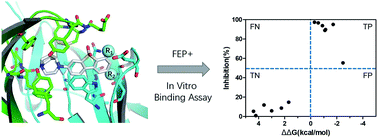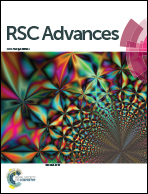In silico studies of ASEM analogues targeting α7-nAChR and experimental verification†
Abstract
The α7 nicotinic acetylcholine receptor (α7-nAChR) is implicated in a variety of neurodegenerative and neuropsychiatric disorders, such as Alzheimer's disease (AD) and schizophrenia. The progress of these disorders can be studied using positron emission tomography (PET) with radiotracers for α7-nAChR. [18F]ASEM and [18F] para-ASEM (also referred to as [18F]DBT-10) are novel and potent α7-nAChR PET radiotracers which have successfully been used in human subjects and nonhuman primates, though further improvement of them is still a pressing task in the community of neurodegeneration research. In this work, we demonstrate the use of modern in silico techniques to predict the binding modes, binding strengths, and residence times for molecular PET tracers binding to proteins, using ASEM and DBT-10 as a showcase of the predictive and interpretational power of such techniques, in particular free energy perturbation theory. The corresponding compounds were synthesized and further tested by in vitro binding experiment for validation. Encouragingly, our in silico modeling can correctly predict the binding affinities of the ASEM analogues. The structure–activity relationships for the ortho- and para-substitutions are well explained at the atomistic level and provide structure-based guiding for the future development of PET tracers for α7-nAChR. A discussion is presented on the complementary use of in silico rational methods based on atomic and electronic principles for in vitro characterization of PET tracers.



 Please wait while we load your content...
Please wait while we load your content...